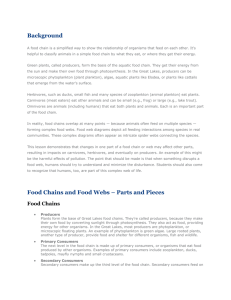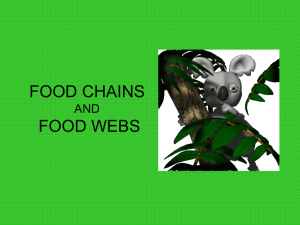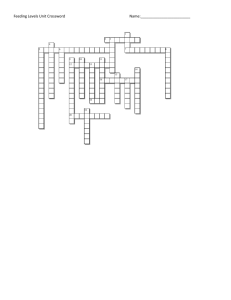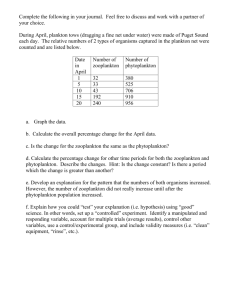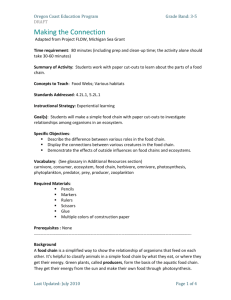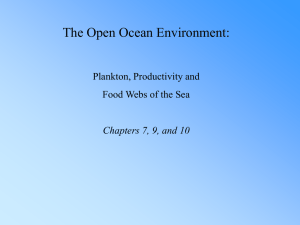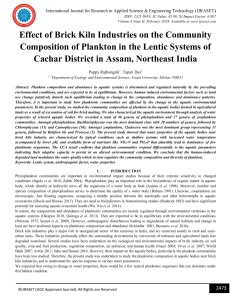Weave an Aquatic Food Web
advertisement
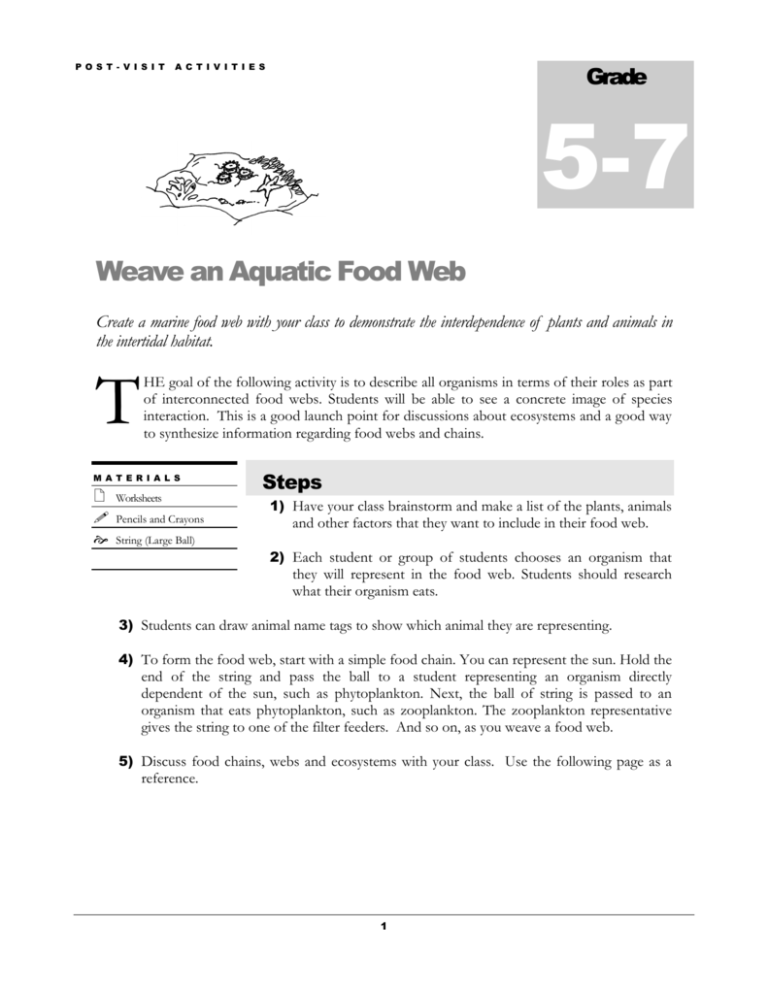
P O S T - V I S I T Grade A C T I V I T I E S 5-7 Weave an Aquatic Food Web Create a marine food web with your class to demonstrate the interdependence of plants and animals in the intertidal habitat. T HE goal of the following activity is to describe all organisms in terms of their roles as part of interconnected food webs. Students will be able to see a concrete image of species interaction. This is a good launch point for discussions about ecosystems and a good way to synthesize information regarding food webs and chains. M A T E R I A L S Worksheets Pencils and Crayons String (Large Ball) Steps 1) Have your class brainstorm and make a list of the plants, animals and other factors that they want to include in their food web. 2) Each student or group of students chooses an organism that they will represent in the food web. Students should research what their organism eats. 3) Students can draw animal name tags to show which animal they are representing. 4) To form the food web, start with a simple food chain. You can represent the sun. Hold the end of the string and pass the ball to a student representing an organism directly dependent of the sun, such as phytoplankton. Next, the ball of string is passed to an organism that eats phytoplankton, such as zooplankton. The zooplankton representative gives the string to one of the filter feeders. And so on, as you weave a food web. 5) Discuss food chains, webs and ecosystems with your class. Use the following page as a reference. 1 Weave an Aquatic Food Web: Things to talk about with your class… What creatures should be part of the aquatic food web? Some possibilities include: the sun, the tiny plants that live at the ocean’s surface, called phytoplankton (FYE-toh-plank-tun; they use the sun as their energy source and serve as the base of the food web), the animals that drift at the ocean’s surface, called zooplankton (carnivores that eat phytoplankton), seaweed, bacteria (to break down dead material), turban snails (herbivores), whelks (carnivores), barnacles and mussels (filter feeders that sift plankton from the water), sea stars, crabs, shrimps, giant octopuses, fishes, birds, marine mammals, and people. What else eats plankton? Is anything else directly dependent on the sun? Add additional webs of string that branch from the first chain to start another web. How many animals are affected by eliminating any one factor or organism in the web? If the barnacles die, what other organisms are affected? Have the student who is representing the barnacle pull the string she is holding. Anyone who feels this tug then pulls on the strings in his hand to pass the affect on to all the organisms he is connected with. Everyone who feels these tugs is affected. How do humans impact this habitat? You can explore human caused problems such as an oil spill. 2

